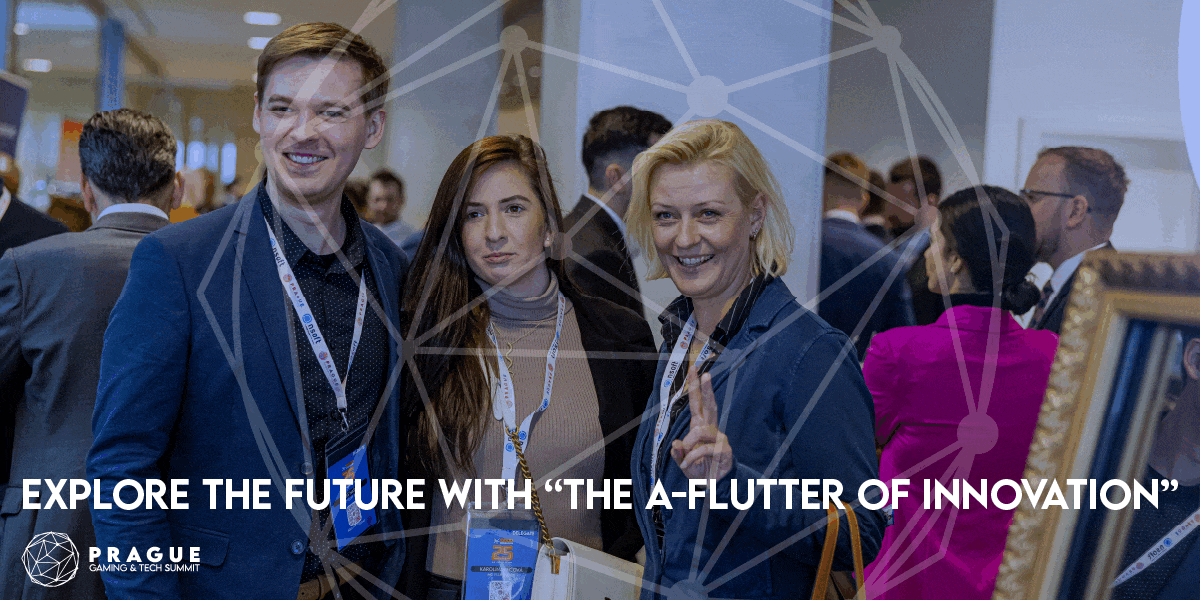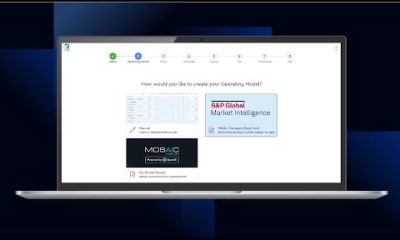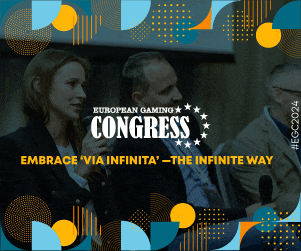Fintech
DLP Resources intersects 218m of 0.80% CuEq* within a 664.3m interval of 0.53% CuEq* on the Aurora Project in Southern Peru
Cranbrook, British Columbia–(Newsfile Corp. – January 5, 2023) – DLP Resources Inc. (TSXV: DLP) (OTCQB: DLPRF) (“DLP” or the “Company“) announces receipt of complete drill results for the third hole, A22-003 on the Aurora porphyry copper-molybdenum project in southern Peru (Figure 1).
Results for the first two drillholes, A22-001 and A22-002 were released on December 05, 2022 (see DLP Resources Inc. news release of December 05, 2022).
Highlights
Drillhole A22-003 intersected significant copper-molybdenum mineralization from below the partially leached upper 38m down to the end of the hole at 702.30m. The most significant mineralized intervals included:
- 664.30m at 0.33% Cu, 483.14ppm Mo and 3.23g/t Ag (0.53% CuEq*) from 38m to 702.30m.
- 132.00m at 0.69% Cu, 161.77ppm Mo and 5.65g/t Ag (0.80% CuEq*) from 132.00m to 350m.
- 92m at 0.83% Cu, 71.07ppm Mo and 6.81g/t Ag (0.92% CuEq*) from 258m to 350m.
- 180.30m at 0.07% Cu, 1283.78ppm Mo and 0.53g/t Ag (0.53% CuEq*) from 522m to 702.3m.
The complete set of results for A22-003 are summarized in Table 1 below.
Results from drillhole A22-003 continue to confirm Aurora is a robust porphyry copper-molybdenum system with mineralization now confirmed to a vertical depth of 660m below a surface elevation of 2762m. To date this is the deepest drilled hole on the Aurora project.
Mr. Gendall, President and CEO, commented: “These significant copper and molybdenum results received for A22-003 are not a surprise as we expect to continue to expand the footprint of the Aurora copper-molybdenum porphyry both at depth and over the known surface dimensions of at least 1000m by 500m. Further drilling for the first six months of 2023 will be to the west and northwest of drillhole A22-003, covering an additional untested portion of the system.”
Aurora Cu-Mo Project – Summary of Drill Results for A22-003
A22-003
Hole A22-003 was drilled to the NE of the mapped porphyry and hornfels contact at an angle of 70 degrees towards an azimuth of 210 degrees (Table 2, Figures 2, 3 and 4). The logged geology is summarized as follows:
- No core recovery from 0.00m to 2.70m.
- Partially leached intrusive breccia and hornfels from 2.70m to 36m.
- Mixed limonitic zone of partially leached sulphides consisting mainly of chalcopyrite and pyrite with secondary covellite and chalcocite on fractures within a hornfels from 36m to 132m.
- Mixed zone of partially leached sulphides (chalcopyrite and pyrite) and secondary enrichment of secondary covellite and chalcocite on sulphides and fractures from 132m to 350m. Host rock is hornfels with occasional diorite sills.
- Hornfels and breccia with pyrite, chalcopyrite and molybdenite from 350 m to 359.80m.
- Feldspar porphyry (intermineral) with chalcopyrite, pyrite and molybdenite from 359.80m to 558m. Quartz-sericite alteration predominates with intermediate argillic overprint.
- Potassic altered feldspar porphyry with disseminated pyrite, molybdenite and chalcopyrite and molybdenite veinlets from 558m to 610.20m.
- Strong potassic altered quartz-feldspar porphyry with disseminated pyrite and magnetite and abundant molybdenite veinlets from 610.20m to 702.30m.
Table 1. Summary of Drill Results for Diamond Drill Hole A22-003. All grades are length-weighted averages of samples within the interval reported.
| Hole | From | To | Interval1 | Description | Cu (total) |
Mo | Ag | Cueq* |
| ID | m | m | m | % | ppm | ppm | % | |
| A22-003 | 2.70 | 38.00 | 35.30 | Partially leached | 0.12 | 48.89 | 1.17 | 0.15 |
| 38.00 | 702.30 | 664.30 | Partially leached /Mixed/Enriched/Primary | 0.33 | 483.14 | 3.23 | 0.53 | |
| Includes | 38.00 | 132.00 | 94.00 | Partially leached with sulphides | 0.21 | 103.24 | 3.78 | 0.28 |
| Includes | 132.00 | 350.00 | 218.00 | Mixed sulphides/Enrichment | 0.69 | 161.77 | 5.65 | 0.80 |
| Includes | 206.00 | 350.00 | 144.00 | Enriched | 0.75 | 96.52 | 5.87 | 0.84 |
| Includes | 258.00 | 350.00m | 92.00 | Enriched | 0.83 | 71.07 | 6.81 | 0.92 |
| Includes | 350.00 | 522.00 | 172.00 | Primary (intermineral) | 0.22 | 258.80 | 2.47 | 0.34 |
| Includes | 522.00 | 702.30 | 180.30 | Primary (Moly rich) | 0.07 | 1283.78 | 0.73 | 0.53 |
Note: *Copper equivalent grades (CuEq) are for comparative purposes only. Calculations are uncut and recovery is assumed to be 100% for the entire drilled length of 702.30m. The project is at an early stage of exploration and there is insufficient metallurgical data for estimation of metal recoveries.
*Copper-equivalence is calculated as: CuEq (%) = Cu (%) + [3.55 × Mo (%)] + [0.0095 × Ag (g/t)], utilizing metal prices of Cu – US$3.34/lb, Mo – US$11.86/lb and Ag – US$21.87/oz.
1 Intervals are downhole drilled core lengths. Drilling data to date is insufficient to determine true width of mineralization. Assay values are uncut.
Table 2: A22-003 Diamond drill hole location, depth, orientation and inclination.
| Hole | Easting | Northing | Elevation | Length | Azimuth | Inclination |
| ID | m | m | Degrees | Degrees | ||
| A22-003 | 190,048 | 8,566,326 | 2762 | 702.30 | 210 | 70 |
Co-ordinates are in WGS84 Zone 19S
Quality Control and Quality Assurance
DLP Resources Peru S.A.C, a subsidiary of DLP Resources Inc., supervises drilling and carries out sampling of HTW and NTW core. Logging and sampling are completed at a secured Company facility situated on the project site. Sample intervals are nominally 1.5 to 2m in length. Drill core is cut in half using a rotary diamond blade saw and samples are sealed on site before transportation to the ALS Peru S.A.C. sample preparation facility in Arequipa by Company vehicles and staff. Prepared samples are sent to Lima by ALS Peru S.A.C. for analysis. ALS Peru S.A.C. is an independent laboratory. Samples are analyzed for 48 elements using a four-acid digestion and ICP-MS analysis (ME-MS61). In addition, sequential copper analyses are done and reports, soluble copper using sulphuric acid leach, soluble copper in cyanide leach, residual copper and total copper. ALS meets all requirements of International Standards ISO/IEC 17025:2005 and ISO 9001:2015 for analytical procedures.
DLP Resources independently monitors quality control and quality assurance (“QA/QC”) through a program that includes the insertion of blind certified reference materials (standards), blanks and pulp duplicate samples. The company is not aware of any drilling, sampling, recovery or other factors that could materially affect the accuracy or reliability of the data reported from 2.70m to 702.30m in A22-003.
Aurora Project
Aurora Project as an advanced stage porphyry copper-molybdenum exploration project in the Province of Calca, SE Peru (Figure 1). The Aurora Project was previously permitted for drilling in 2015 but was never executed. Thirteen historical drill holes, drilled in 2001 and 2005 totaling 3,900m were drilled over an area of approximately 1000m by 800m, cut significant intervals of copper and molybdenum mineralization. From logging of the only three remaining holes DDA-01, DDA-3A and DDA-3 and data now available, it appears that only three of the thirteen holes tested the enriched copper zone and only one hole drilled deep enough to test the primary copper and molybdenum zone (see DLP Resources Inc. news release of May 18, 2021)
Salient historic drill hole data of the Aurora Project are:
-
190m @ 0.57% Cu, 0.008% Mo in DDA-1 with a high-grade intercept of 20m @ 1.01% Cu related to a supergene enrichment zone of secondary chalcocite;
-
142m @ 0.5% Cu, 0.004% Mo in DDA-3;
-
71.7m @ 0.7% Cu, 0.007% Mo in DDA-3A (see historical Focus Ventures Ltd. news release July 11, 2012); and
-
One of the historical holes ABC-6 drilled on the edge of the system intersected 64m @ 0.49% Cu and 0.087ppm Mo (Figure 2).
A review of the historical drilling indicates that the majority of the thirteen holes were drilled in the leached and partially leached zones of the porphyry system. Ten of the thirteen holes never fully tested the oxide and secondary enrichment zone and/or the primary copper zone at depth encountered in DDA-01. Copper-molybdenum mineralization is hosted by quartz-feldspar porphyries intruded into slates-hornfels and pelitic sandstones belonging to the Ordovician (439 – 463 ma) Sandia Formation.
Figure 2. Aurora Project – Simplified geology showing historic drilling and A22-001, A22-002 and A22-003 location
To view an enhanced version of Figure 2, please visit:
Figure 4: Aurora porphyry copper-molybdenum project – Drill core mineralization from A22-003
To view an enhanced version of Figure 4, please visit:
https://images.newsfilecorp.com/files/6456/150351_943e2703b4c4a834_004full.jpg
Qualified Person
David L. Pighin, consulting geologist and co-founder of DLP Resources, is the qualified person of the Company as defined by National Instrument 43-101. Mr. Pighin has reviewed and approved the technical contents of this news release.
About DLP Resources Inc.
DLP Resources Inc. is a mineral exploration company operating in Southeastern British Columbia and Peru, exploring for Base Metals and Cobalt. DLP is listed on the TSX-V, trading symbol DLP and on the OTCQB, trading symbol DLPRF. Please refer to our web site www.dlpresourcesinc.com for additional information.
FOR FURTHER INFORMATION PLEASE CONTACT:
DLP RESOURCES INC.
Ian Gendall, CEO & President
Jim Stypula, Executive Chairman
Robin Sudo, Chief Financial Officer and Corporate Secretary
Maxwell Reinhart, Investor Relations
Telephone: 250-426-7808
Email: [email protected]
Email: [email protected]
Email: [email protected]
Email: [email protected]
Neither the TSX Venture Exchange nor its Regulation Services Provider (as that term is defined in the policies of the TSX Venture Exchange) accepts responsibility for the adequacy or accuracy of this release.
Cautionary Note Regarding Forward-Looking Information
This release includes certain statements and information that may constitute forward-looking information within the meaning of applicable Canadian securities laws. Forward-looking statements relate to future events or future performance and reflect the expectations or beliefs of management of the Company regarding future events. Generally, forward-looking statements and information can be identified by the use of forward-looking terminology such as “intends” or “anticipates”, or variations of such words and phrases or statements that certain actions, events or results “may”, “could”, “should”, “would” or “occur”. This information and these statements, referred to herein as “forward‐looking statements”, are not historical facts, are made as of the date of this news release and include without limitation, statements regarding discussions of future plans, estimates and forecasts and statements as to management’s expectations and intentions with respect to drilling on Aurora Project in Peru.
These forward‐looking statements involve numerous risks and uncertainties and actual results might differ materially from results suggested in any forward-looking statements. These risks and uncertainties include, among other things drill results expected from the Aurora Project in Peru.
Although management of the Company has attempted to identify important factors that could cause actual results to differ materially from those contained in forward-looking statements or forward-looking information, there may be other factors that cause results not to be as anticipated, estimated or intended. There can be no assurance that such statements will prove to be accurate, as actual results and future events could differ materially from those anticipated in such statements. Accordingly, readers should not place undue reliance on forward-looking statements and forward-looking information. Readers are cautioned that reliance on such information may not be appropriate for other purposes. The Company does not undertake to update any forward-looking statement, forward-looking information or financial out-look that are incorporated by reference herein, except in accordance with applicable securities laws. We seek safe harbor.
Fintech
Fintech Latvia Association Releases Fintech Pulse 2024: A Guide to Latvia’s Growing Fintech Hub
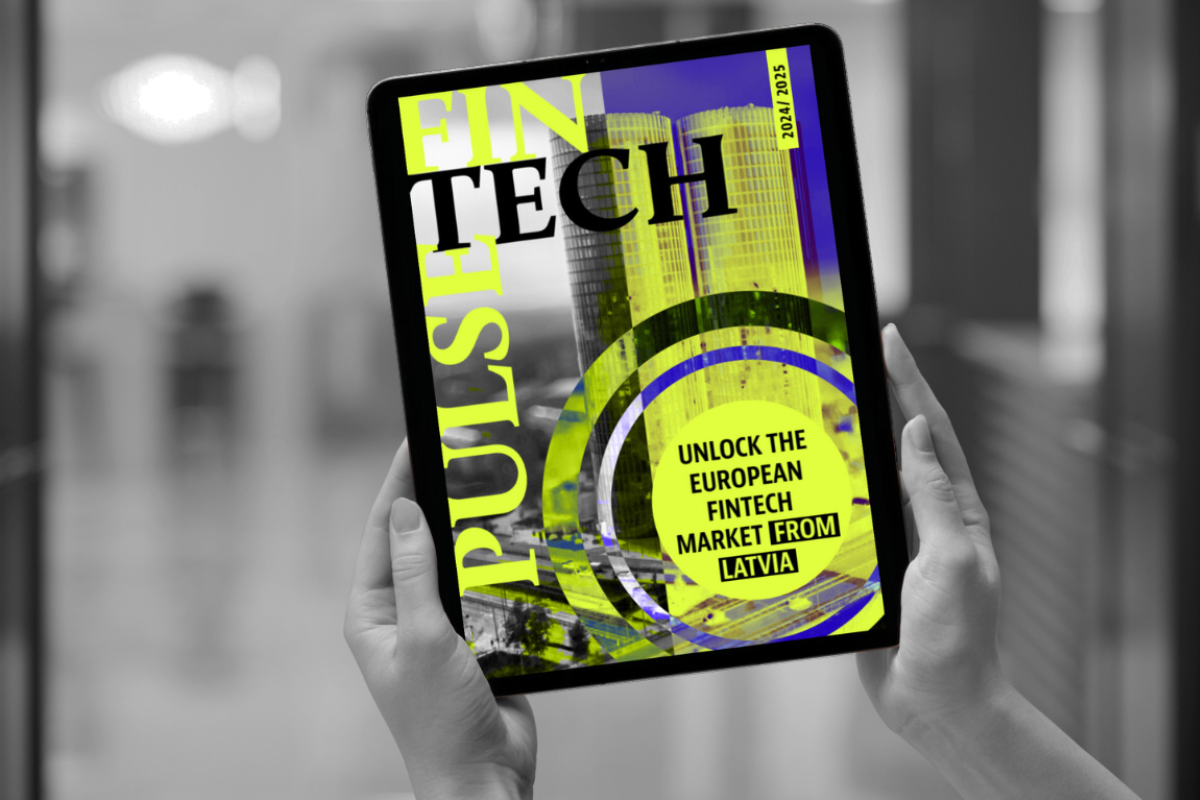
The Fintech Latvia Association has launched the latest edition of its annual publication, Fintech Pulse 2024, unveiling insights and resources that position Latvia as a thriving hub for European fintech.
Announced at this year’s Fintech Forum, the magazine is now available in digital format, offering a comprehensive guide for fintech professionals and entrepreneurs navigating the Latvian market and exploring its advantages.
This issue covers essential topics, from support tools provided by Latvijas Banka and newcomer roadmaps to Riga’s investor resources and fintech education opportunities. Readers will find the latest fintech news from Latvia, coverage of this year’s key industry events, and member insights on the future of fintech. The Fintech Landscape section provides a comprehensive overview of the Latvian fintech ecosystem.
Tina Lūse, Managing Director of Fintech Latvia Association, expressed excitement about the ecosystem’s growth: “We are excited to unveil the third annual edition of Fintech Pulse. This year has been pivotal for our ecosystem, and together with public sector stakeholders, we are enhancing financial inclusion, democratizing investments, and driving innovation throughout the sector. This is a testament to Latvia’s emergence as a fintech hub, establishing itself as an equal partner in innovation and support within the Baltic region.”
Minister of Finance Arvils Ašeradens highlighted Latvia’s fintech potential in the magazine, stating: “Latvia has already made strides in adapting its regulatory framework to support a stable financial system. Now, we encourage financial market players to invest in modern technologies to meet the growing demand for inclusive financial services and solidify Latvia’s position in the fintech landscape. We are confident that with the combined offer of the government, Latvijas Banka and Riga city, we are a great place to start your next scalable European FinTech!”
Minister of Economics Viktors Valainis expressed Latvia’s ambition in the magazine, stating: “Latvia wants to become a WEB 3.0. innovation hub and solidify itself as one of the leaders of a newly regulated EU crypto-asset market. We welcome international companies to choose Latvia, a flexible and fast-paced country, where you can obtain a MICA license in just 3 months. Open your office in Latvia, receive a MICA license and serve the whole EU market!”
The Fintech Latvia Association brings together fintech and non-banking financial service providers to represent their interests at both the national and international levels. It promotes sustainable development in Latvia’s financial sector by fostering reliable, responsible, and long-term industry practices that earn trust from consumers and regulatory authorities. The association is committed to supporting innovation and growth opportunities within the fintech landscape.
The post Fintech Latvia Association Releases Fintech Pulse 2024: A Guide to Latvia’s Growing Fintech Hub appeared first on News, Events, Advertising Options.
Fintech
Quantum Security and the Financial Sector: Paving the Way for a Resilient Future

The World Economic Forum (WEF) has released a pivotal white paper in collaboration with the Financial Conduct Authority (FCA), titled “Quantum Security for the Financial Sector: Informing Global Regulatory Approaches”. This January 2024 publication underscores the urgent need for global cooperation as the financial sector transitions from a digital economy to a quantum economy, highlighting both the immense opportunities and cybersecurity challenges posed by quantum computing.
Quantum: A Double-Edged Sword for Finance
Quantum computing offers transformative benefits for the financial sector, such as accelerated portfolio optimization, enhanced fraud detection, and improved risk management. Yet, it simultaneously threatens the very foundation of cybersecurity. With quantum’s ability to break traditional encryption methods, sensitive data and financial transactions face significant risks. The white paper warns that such vulnerabilities could erode trust in the financial system and destabilize global markets.
The urgency to prepare is evident, with some quantum threats, such as “Harvest Now, Decrypt Later” attacks, already emerging. Governments and regulators, including the United States with its National Security Memorandum on Quantum (2022), have begun advocating for quantum security readiness by 2035. However, as noted in the paper, transitioning to a quantum-secure infrastructure is a monumental task requiring unprecedented coordination between regulators, industry leaders, and technology providers.
A Collaborative Framework: Four Guiding Principles
To address the complex challenges posed by quantum technologies, the WEF and FCA have proposed four guiding principles to inform global regulatory and industry approaches:
- Reuse and Repurpose: Leverage existing regulatory frameworks and tools to address quantum risks, rather than creating entirely new systems.
- Establish Non-Negotiables: Define baseline requirements for quantum security, ensuring consistency and interoperability across organizations and jurisdictions.
- Increase Transparency: Foster open communication between regulators and industry players to share best practices, strategies, and knowledge.
- Avoid Fragmentation: Prioritize global collaboration to harmonize regulatory efforts and avoid inconsistencies that could burden multinational organizations.
These principles aim to create a unified, forward-looking strategy that balances innovation with security.
A Four-Phase Roadmap for Quantum Security
The white paper introduces a phased roadmap to help the financial sector transition toward quantum security:
- Prepare: Raise awareness of quantum risks, assess cryptographic infrastructure, and build internal capabilities.
- Clarify: Formalize engagement between stakeholders, map current regulations, and model the cost and complexities of transitioning to quantum-safe systems.
- Guide: Address regulatory gaps, translate technical standards into actionable frameworks, and develop industry-wide best practices.
- Transition and Monitor: Implement cryptographic management modernization and adopt iterative, adaptable regulatory approaches to remain resilient in the quantum economy.
This roadmap emphasizes adaptability, encouraging stakeholders to continuously refine their strategies as quantum technologies evolve.
The Path Forward: Collaboration as a Catalyst
The transition to a quantum-secure financial sector is not merely a technological shift but a comprehensive rethinking of how industries and regulators approach cybersecurity. The interconnected nature of global finance means that collaboration between mature and emerging markets is crucial to avoid vulnerabilities that could undermine the entire system.
Regulators and financial institutions must act with urgency. As Sebastian Buckup, Head of Network and Partnerships at the World Economic Forum, notes in the report:
“The quantum economy era is fast approaching, and we need a global public-private approach to address the complexities it will introduce. We welcome this opportunity to collaborate with the FCA to chart the roadmap for a seamless and secure transition for the financial services sector.”
Similarly, Suman Ziaullah, Head of Technology, Resilience, and Cyber at the FCA, emphasizes:
“Quantum computing presents considerable opportunities but also threats. The financial sector relies heavily on encryption to protect sensitive information, the exposure of which could cause significant harm to consumers and markets. Addressing this requires a truly collaborative effort to transition to a quantum-secure future.”
Global Impact: Ensuring Resilience in an Evolving Landscape
As quantum technologies mature, they will redefine the landscape of cybersecurity. The financial sector, as one of the most sensitive and interconnected industries, must prioritize preparedness to ensure stability, protect consumers, and maintain trust.
The Quantum Security for the Financial Sector: Informing Global Regulatory Approaches white paper offers an essential foundation for continued dialogue and action. By adhering to the guiding principles and roadmap outlined in the report, stakeholders can navigate this transformation with foresight and cooperation.
The full report, published by the World Economic Forum, highlights the need for a unified global approach to quantum security, serving as a rallying call for industry and regulatory leaders alike.
Source: World Economic Forum, “Quantum Security for the Financial Sector: Informing Global Regulatory Approaches”, January 2024.
The post Quantum Security and the Financial Sector: Paving the Way for a Resilient Future appeared first on News, Events, Advertising Options.
Fintech
Fintech Pulse: Daily Industry Brief – A Dive into Today’s Emerging Trends and Innovations

The fintech landscape continues to redefine itself, driven by innovation, partnerships, and groundbreaking strategies. Today’s roundup focuses on the latest digital wallet offerings, evolving payment trends, strategic collaborations, and notable funding achievements. This editorial explores the broader implications of these developments, casting light on how they shape the future of fintech and beyond.
Beacon’s Digital Wallet for Immigrants: A Gateway to Financial Inclusion
Beacon Financial, a leading player in financial technology, recently launched a digital wallet tailored to meet the unique needs of immigrants moving to Canada. This offering bridges a critical gap, enabling seamless financial integration for newcomers navigating a foreign system.
By combining intuitive technology with user-centric features, Beacon aims to empower immigrants with tools for payments, savings, and remittances. This aligns with the growing demand for tailored financial products that resonate with specific demographics.
Op-Ed Insight:
Financial inclusion is more than just a buzzword; it’s a moral imperative in the fintech space. Products like Beacon’s digital wallet highlight the industry’s potential to create tangible change. As global migration trends increase, such offerings could inspire similar initiatives worldwide.
Source: Fintech Futures.
Juniper Research Highlights 2025’s Payment Trends
Juniper Research’s latest report unveils pivotal payment trends poised to dominate in 2025. Central themes include the adoption of instant payment networks, a surge in embedded finance solutions, and the rise of crypto-backed financial products.
The research underscores the rapid adoption of real-time payment systems, fueled by increasing consumer demand for speed and efficiency. Meanwhile, embedded finance promises to blur the lines between traditional banking and non-financial services, delivering personalized and context-specific solutions.
Op-Ed Insight:
As the lines between financial services and technology continue to blur, these trends emphasize the industry’s shift toward convenience and personalization. The growing role of crypto-based solutions reflects an evolving consumer mindset, where decentralization and digital-first experiences gain precedence.
Source: Juniper Research.
MeaWallet and Integrated Finance Partner to Revolutionize Digital Wallets
MeaWallet, a prominent fintech solutions provider, has partnered with Integrated Finance to advance digital wallet capabilities and secure card data access for fintech companies. This collaboration focuses on empowering fintechs to deliver better, safer digital payment experiences.
MeaWallet’s role as a technology enabler aligns seamlessly with Integrated Finance’s goal of simplifying complex financial infrastructures. Together, they aim to create scalable, robust platforms for secure payment solutions.
Op-Ed Insight:
Partnerships like this underscore the importance of collaboration in driving innovation. As security concerns grow in tandem with digital payment adoption, solutions addressing these challenges are essential for maintaining consumer trust. The fintech ecosystem thrives when synergy and innovation coalesce.
Source: MeaWallet News.
Nucleus Security Among Deloitte’s Fastest-Growing Companies
Nucleus Security has achieved a remarkable milestone, ranking 85th on Deloitte’s 2024 Technology Fast 500 list. This achievement is attributed to its robust cybersecurity solutions, which cater to the increasingly digital fintech environment.
With cyberattacks becoming more sophisticated, fintech companies are under immense pressure to safeguard their platforms. Nucleus Security’s growth reflects the rising demand for comprehensive, scalable security solutions that protect sensitive financial data.
Op-Ed Insight:
In a digital-first world, robust cybersecurity isn’t optional—it’s fundamental. The recognition of companies like Nucleus Security signals the growing importance of protecting fintech infrastructure as the industry scales globally.
Source: PR Newswire.
OpenYield Secures Funding to Transform the Bond Market
OpenYield has announced a successful funding round, aiming to revolutionize the bond market through innovative technology. The platform promises greater transparency, efficiency, and accessibility in fixed-income investments.
This funding underscores the growing appetite for digitizing traditionally opaque financial markets. By leveraging cutting-edge technology, OpenYield seeks to democratize bond investments, making them accessible to a broader audience.
Op-Ed Insight:
The bond market, long viewed as complex and inaccessible, is ripe for disruption. OpenYield’s efforts to modernize this space highlight fintech’s transformative potential to democratize finance and empower individual investors.
Source: PR Newswire.
Key Takeaways: Shaping the Future of Fintech
Today’s developments underscore several critical themes in the fintech landscape:
- Personalization and Inclusion: Products like Beacon’s wallet highlight the importance of understanding and addressing specific user needs.
- Collaborative Ecosystems: Partnerships, like that of MeaWallet and Integrated Finance, emphasize the power of collaboration in solving industry challenges.
- Emerging Technologies: Juniper Research’s predictions affirm the continued influence of blockchain, embedded finance, and instant payment networks.
- Security at the Core: The recognition of Nucleus Security underscores the essential role of cybersecurity in fintech.
- Market Transformation: OpenYield’s funding signifies the ongoing disruption of traditional financial markets, paving the way for broader accessibility.
The post Fintech Pulse: Daily Industry Brief – A Dive into Today’s Emerging Trends and Innovations appeared first on News, Events, Advertising Options.
-

 Fintech5 days ago
Fintech5 days agoFintech Pulse: Industry Updates, Innovations, and Strategic Moves
-

 Fintech4 days ago
Fintech4 days agoFintech Pulse: Daily Industry Brief – A Dive into Today’s Emerging Trends and Innovations
-

 Fintech PR5 days ago
Fintech PR5 days agoROLLER Releases 2025 Attractions Industry Benchmark Report, Unveiling Key Trends and Revenue Strategies
-
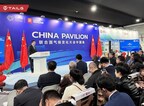
 Fintech PR5 days ago
Fintech PR5 days agoTAILG Represents the Industry at COP29, Advancing South-South Cooperation with Low-Carbon Solutions
-

 Fintech6 days ago
Fintech6 days agoFintech Pulse: Milestones, Partnerships, and Transformations in Fintech
-

 Fintech7 days ago
Fintech7 days agoFintech Pulse: Navigating Expansion, Innovation, and Sustainability
-

 Fintech PR3 days ago
Fintech PR3 days agoAlkira Ranked 25th Fastest-Growing Company in North America and 6th in the Bay Area on the 2024 Deloitte Technology Fast 500™
-

 Fintech PR5 days ago
Fintech PR5 days agoThe CfC St. Moritz Announces New Speakers from BlackRock, Binance, Bpifrance, Temasek, PayPal, and More for Upcoming 2025 Conference

